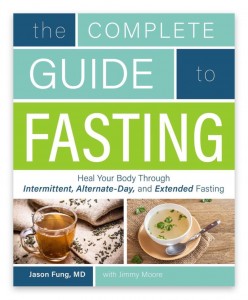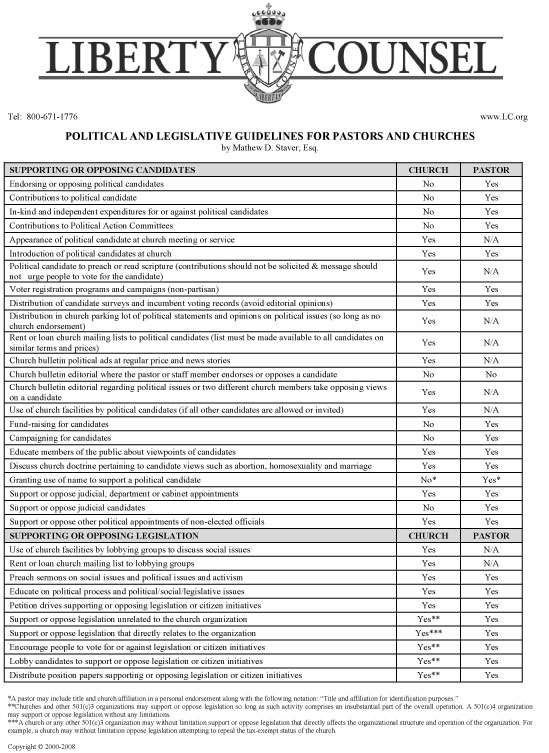By Dr. Mercola
Fasting is one of the oldest dietary interventions in the world, and modern science confirms it can have a profoundly beneficial influence on your health. Dr. Jason Fung, a nephrologist (kidney specialist) with a practice in Canada, has written an important landmark book on this topic.
“The Complete Guide to Fasting: Heal Your Body Through Intermittent, Alternate-Day, and Extended Fasting,” co-authored with Jimmy Moore, details how to implement fasting and overcome some of the most common challenges that might arise, including persistent fears and myths associated with extended water fasting.
For the first decade of his practice, Fung was — like most doctors — conventionally oriented. As a kidney specialist, many of his patients had type 2 diabetes as the primary cause of their kidney failure.
Fasting Helps Reverse Diabetes — And Related Health Conditions
It became clear to him that the conventional treatment of type 2 diabetes was seriously flawed.
Despite patients’ best efforts to manage their diabetes, taking their insulin and following the recommended diet and so on, they would still end up with complications such as kidney disease, requiring dialysis, or they’d need amputations, or they’d go blind.
“As a doctor, we got trained to give medications, but obviously it wasn’t working,” he says. “The answer is actually pretty obvious. Because if diabetes, type 2 predominantly, is what’s causing the kidney disease, you’re not going to be able to do anything about the kidney disease until you get rid of the diabetes.
That was kind of where I started. Then I thought, ‘Everybody says type 2 diabetes is this chronic kind of progressive disease … It only goes forward, one way.’ But actually when you think about it, type 2 diabetes isn’t like that at all …
[I]f you want to get rid of the type 2 diabetes, you have to get rid of the obesity … That’s how you’re going to help people get better. I started thinking about what causes weight gain … It’s certainly not calories.
That’s our big mistake. That’s why we’ve been unsuccessful at creating weight loss, because we’ve got the wrong kind of target …
It’s really about the hormonal balance and predominantly about insulin. We have to reduce insulin. Low-carbohydrate diets are a way to lower insulin … In some people, that’ll reverse their diabetes …
I started using low-carbohydrate diets and it didn’t really work. The problem was that it was a little complicated for people …
I had to make it simpler … I thought, ‘Why not fasting?’ … It’s been used for thousands of years … I started looking at some of the science … There are actually huge benefits that we weren’t recognizing.
Part of it was also we’ve always been trained, ‘You have to eat. You have to eat.’ But in fact, that’s not true. If you think about it, in the old days … there would be lots of days where people didn’t eat …
That’s really what [body] fat is [for]. It’s really simply stored fuel; stored food energy. We’re using it [when we fast]. That’s it. That’s all that happens. There’s no serious side effects or consequences to fasting.
If there was, we would have known about it several thousand years ago. But there wasn’t. That’s where I started from.”
The Clinical Use of Fasting
Fung went on to implement fasting in his practice, and the results, he says, have been “unbelievable.” He’s been able to take many patients off all medications; they’re losing weight, report increased energy, and their diabetes is reversed.
“This is why we go into medicine: To make people better. For the first time, this was what was happening. Before, for 10 years, all I did was watch people get worse until I put them on dialysis. That was really not the way to go,” he says.
When he first sought to implement this program clinically, there was no formal guide to follow, which is what inspired him to write “The Complete Guide to Fasting.” Using his own clinical experience, he created a guide that anyone can use to their benefit.
“When people start, they’re super skeptical. They think it’s [a] terrible [idea]. But then they come back and they’re total converts. They’re like, ‘This is the best thing.’
Because they’re losing weight, they’re seeing that their medications are going down, their sugars are going down. It’s obvious to them that they’re actually getting much, much healthier,” he says.
“This is all without medications. We’re trying to take away medications. It’s an all-natural solution. You’re really letting your body just clean itself out from all of that excess sugar and fat.
There’s nothing wrong with that. It’s free. It’s available. All we have to do is give people the knowledge and they can make themselves better, which is incredible.”
If you’re obese, nutritional ketosis is another excellent dietary protocol. I recently interviewed Dr. Jeanne Drisko, head of the University of Kansas Integrative Medical Center, who has used a ketogenic protocol in a clinical setting for many years now.
The challenge is implementation and compliance. Nutritional ketosis is more complicated than fasting. Fasting can also be a more rapid process. Rather than waiting weeks or months for your body to upregulate and be able to effectively metabolize fat again, fasting really jumpstarts this process.
Breaking Down Myths About Fasting
Fung’s book is so helpful because it provides easy-to-follow basic guidelines for fasting, and reviews some of the most common myths and fears that keep many from implementing a fasting regimen.
One common myth is that fasting will lead to loss of muscle mass. The book clearly describes the process of protein catabolism, explaining how your body actually downregulates protein catabolism and upregulates growth hormones in response to fasting.
“If you follow the biochemistry, your body stores energy as glycogen in the liver, which is links or chains of sugar, and then it stores [it as] body fat.
During fasting, you start by burning off all the glycogen in the liver, which is all the sugar. There’s a point there where some of the excess amino acids in your body need to get burnt as well.
That’s where people say, ‘That’s where you’re burning muscle.’ That’s not actually what happens. The body never upregulates its protein catabolism. Never is it burning muscle; there’s a normal turnover that goes on.
There is a certain amount of protein that you need for a regular turnover. When you start fasting, that starts to go down and then fat oxidation goes way up. In essence, what you’ve done is you switched over from burning sugar to burning fat. Once you start burning fat, there’s almost an unlimited amount of calories there. You could go for days and days.
What’s interesting is that if you take a pound of fat, that’s roughly 3,500 calories. If you eat somewhere around 1,800 to 2,000 calories a day, it takes two full days of fasting to burn a single pound of fat, which is very surprising to people. If you’re trying to lose 100 pounds, you could theoretically go 200 days of fasting just to burn all that fat … People worry about fasting for 24 hours. I’m like, ‘You could go 200 days.’ Then it’s like, ‘OK. Maybe it’s OK to go 24 hours without eating.'”
The ‘Starvation Mode’ Myth
Another common fear is that fasting equals starvation, which is not true. First of all, starvation is a forced situation that you have no control over whereas fasting is optional. You have complete control. Many also believe they cannot or should not fast because it will send their body into “starvation mode” — a situation where the body starts holding on to fat rather than burning it off.
“What they’re talking about is where the body’s metabolism starts to slow down so significantly that instead of burning 2,000 calories a day, your body might burn 1,000 calories a day. In that case, even if you’re eating only 1,500 calories a day, for example, you’re going to gain your weight back. That’s actually what happens when you reduce your calories. We know that … as you cut your calorie intake, your calorie expenditure goes down as well.
Starvation mode actually is guaranteed if you just try and cut your calories. But what’s interesting is that fasting doesn’t do that. What happens during fasting is that … after four days of fasting, the basal metabolic rate is actually 10 percent higher than when you started. The body has not shut down at all. In fact, what it’s done is it switched fuel sources. It switched from burning food to burning [body] fat. Once it’s burning [body] fat, it’s like, ‘Hey, there’s plenty of this stuff. Let’s burn our 2,000 calories’…”
This is also why fasting tends to increase energy opposed to leaving you feeling drained. If you’re overweight and lethargic, fasting helps unlock all that energy already lodged in your body that you previously had no access to. Fasting forces your body to start accessing those stores of energy, and once that happens, your body suddenly has a near unlimited supply of energy!
Fasting also helps improve other biochemical systems in your body. There’s interplay of hormonal systems like the mammalian target of rapamycin (mTOR), AMPK, leptin and IGF-1 — all of which are optimized in the right direction when fasting. It also improves your mitochondrial function, allowing your mitochondria to regenerate. So it’s not just simply turning on an enzyme switch to burn fat; it’s a very complex process that upregulates in the direction of health.
Understanding the Role of Insulin
Insulin is the primary hormone that tells your body whether to store energy or burn it. When you eat, you’re taking calories in and insulin goes up. Higher levels of insulin signal your body to store energy. When insulin falls, it tells your body to release energy. When you develop insulin resistance, your insulin levels remain chronically elevated, hence your body is in constant fat-storing mode.
Without the signal to burn energy, you end up feeling tired and sluggish. You have plenty of fuel available, but it’s all “locked away” in your fat cells, and it will remain unavailable until your body receives the appropriate signal — a drop in insulin. This is also why it’s so difficult to lose weight when you are insulin resistant.
The key to breaking this cycle is to have sustained low insulin for periods of time, and this is why fasting can be so tremendously beneficial. Fasting lowers insulin more powerfully than any other strategy, which then allows the stored energy (body fat) to be used again.
“That’s why you start to use up some of your fat stores and you’re not hungry, because you’re, in essence, eating your own fat. That’s the other thing that people are always surprised about. When they come back, they say, ‘Hey, I’m not actually that hungry.’ I’m like, ‘That’s no surprise, because your body is burning fat. If it’s burning [body] fat, it doesn’t need to eat,” Fung explains.
“We talk a lot about what you should eat and what you shouldn’t eat. But people never talk about meal timing — making sure you have long periods where you’re not eating. Look at the word “breakfast” in English. That’s break fast. That’s the meal that breaks your fast. That implies two things: One, fasting is a part of everyday life. We’ve forgotten that. We think it’s some sort of Herculean effort, but it’s not. We should be fasting every day.
If you balance your periods of feeding and fasting, you will stay in balance. If you are always in feeding phase, then you’re not going to be in balance and you’re going to gain weight. The second thing it means is that you can break your fast at any time. It doesn’t have to be 8:00 in the morning. You can break your fast at any time of the day or you can eat two days later.
It’s not that important … People, even when they’re not hungry, are forcing themselves to eat something … Forcing yourself to eat when you’re not hungry is not a winning strategy for weight loss. Logically, it doesn’t make sense. But these sort of illogical thoughts get propagated and then it becomes conventional dietary advice.”
Variations of Fasting
There are many ways to do an extended fast. Following are some of the most common variations:
• Water fasting. This is exactly what it sounds like: You don’t eat; you only drink water, for several days in a row (typically no less than 24 hours).
• Water plus non-caloric beverages. A slight variation on the water fast is to include other non-caloric beverages, such as herbal tea and coffee (without milk, sugar or other sweetener, including artificial non-caloric sweeteners).
• Bone broth variation. Another variation Fung often recommends for longer fasts is to allow the use of bone broth. In addition to healthy fats, bone broth also contains lots of protein, so it’s not really a true fast.
Still, in his clinical experience, many who take bone broth in addition to water, tea and coffee experience good results. “If you’re getting the results you want and it’s making it easier for you to stick to the program, then you should do it,” he says. “If you start getting bad results with fat fasting or bone broth fasting, you can go to classic water-only fast.”
• Fat fasting. Here, you allow healthy fats during the fast in addition to water and/or non-caloric beverages. While you probably would not eat a stick of butter, you could have bulletproof coffee (black coffee with butter, coconut oil or MCT oil), for example. Alternatively, you could add the fat to your tea.
Dietary fat produces a very minor insulin response, and since you’re keeping your insulin levels low, you’re still getting most of the benefits of fasting even though you’re consuming plenty of calories. Adding healthy fats such as butter, coconut oil, MCT oil and avocado can make the fasting experience a lot easier. “Lots of people have done very well with this sort of fat fast,” Fung notes, adding “Anything that increases your probability of success I’m all for.”
I’m personally quite intrigued with the fat fast. I recommended water fasting to my landscaper, but after three days she felt really fatigued. While this is a normal response in the initial stages, I made her a “fat-bomb drink,” which perked her right back up. I use Pau d’arco tea as the base.
It contains beta-lapachone, which upregulates NAD+, an important electron transfer mechanism and mitochondrial signaling molecule. To that, I add some coconut oil, MCT C8 oil, butter and a little stevia. It contains about 400 or 500 calories per cup.
Part of the key is to avoid protein to inhibit mTOR. While the level of protein at which you’ll counteract the benefits of fasting is individual, Fung believes you’ll likely see results as long as you stay below 10 or 20 grams of protein per day. As a reminder, protein raises your insulin, although not to the same degree as net carbs do. Excess protein is likely more damaging metabolically than excess carbs.
“I was looking at some data recently where they graphed where your blood sugars are in relation to where your ketones are. Ketones start to go up as your blood glucose falls [but] that slope changes in different people,” Fung says. “If you look at, for instance, type 2 diabetics, they have a very steep slope. That is their blood glucose — even as it falls — ketones don’t go up.
That’s probably why they feel like crap, because they’re not getting the ketones. The blood glucose is going down, which it should, but the body should be producing ketones for their fuel for the brain, but it’s not. In those cases, some of the fat bombs, some of the exogenous ketones, may actually make it a lot easier for people to get through that. As your body becomes [fat] adapted, which can take two weeks to a month, that shouldn’t happen anymore …
If you have never fasted and you do a three-day fast, you may feel pretty lousy. We tell people to expect that. You can either continue or you can take a break and let your body become more adapted to it.”
The same applies to hunger pangs, which tend to kick in the hardest on the second day of a fast. By the fifth or sixth day, however, hunger practically disappears.
Important Contraindications
While 80 percent of the population would likely benefit from water fasting, there are several absolute contraindications. If any of the following apply to you, you should NOT do extended types of fasting:
- Underweight, defined as having a body mass index (BMI) of 18.5 or less.
- Malnourished (in which case you need to eat healthier, more nutritious food).
- Children should not fast for longer than 24 hours, as they need nutrients for continued growth. If your child needs to lose weight, a far safer and more appropriate approach is to cut out refined sugars and grains. Fasting is risky for children as it cuts out ALL nutrients, including those they need a steady supply of.
- Pregnant and/or breastfeeding women. The mother needs a steady supply of nutrients in order to assure the baby’s healthy growth and development, so fasting during pregnancy or while breastfeeding is simply too risky for the child.
Use Caution If You’re on Medication
If you’re on medication, you need to use caution when fasting, as some may need to be taken with food. This includes metformin, aspirin and any other drugs that might cause stomach upset or stomach ulcers. Risks are especially high if you’re on diabetic medication. If you take the same dose of medication but don’t eat, you run the risk of having very low blood sugars (hypoglycemia), which can be very dangerous.
So, if you’re on diabetic drugs, you must adjust your medication before you fast. If your doctor is adverse toward or unfamiliar with fasting, you’d be wise to find one that has some experience in this area so that they can guide you on how to do this safely.
Keep in mind that hypoglycemia is best diagnosed by symptoms alone, opposed to any specific blood glucose number. I wear a 24-hour continuous glucose monitor. Sometimes when I’m really pushing my carbs low, I’ll go down to 35 milligrams per deciliter (mg/dl) at night, yet I’m not symptomatic at all. For someone who’s hypoglycemic or used to having blood sugar levels of 180, dropping to 35 could put them in serious trouble.
Also be aware that if you have high uric acid, fasting can precipitate gout. Fasting tends to increase your uric acid level because your kidneys increase their reabsorption of uric acid when you don’t eat. Most people will not experience a problem, but if you have gout you may need to consult with your physician about this.
Interesting Facts About Fasting and Meal Timing
Your body is a marvel of ingenuity, and the more you can work WITH it rather than against it, the healthier you’re likely to be. Consider the following: Intermittent fasting involves scheduling your meals in such a way that you get a period of fasting each day. Typically, you’ll eat all of your meals within a six- or seven-hour window. When I first started intermittent fasting, I decided to skip breakfast.
However, in studying mitochondrial function, I realized it’s not a good idea to eat late at night, because that’s when your body is readying for rest, regeneration and repair. Eating in the evening creates surplus ATP, which will simply generate excessive amounts of damaging reactive oxygen species (ROS). At that point, I began avoiding food for a minimum of three hours (and typically it’s closer to five or even six hours) before bedtime.
“There’s some interesting data on that,” Fung says. “If you look at insulin response, insulin drives a lot of weight gain. But if you take the same meal close to bedtime versus in the middle of the day, you actually get a higher insulin response at the end of the day, which is interesting and which is not good.
I actually think it’s best to take your biggest meal sometime [around] lunch to early afternoon, and then go easy at [your] night time meal and into the next day. I think there’s something in that … There’s not a lot of science out there, but I think it really makes a lot of sense. In terms of the advantages of fasting, the key thing to understand is that fasting is almost the opposite of every diet that’s out there. That’s why it’s so successful.
There are so many advantages to it: It’s not complicating your life. It’s actually simplifying your life. It doesn’t cost any money. In fact, this saves you money. It doesn’t take any time. In fact, it saves you time because you don’t have to cook, you don’t have to eat, you don’t have to do anything. You don’t have to plan for it.
There are so many different ways that it’s beneficial. You can add it to any diet. If you’re vegetarian, you can still fast. If you don’t eat nuts, if you have an allergy to meat, if you can’t cook, you can still fast. Any diet can be improved by fasting. It’s so powerful. You can continue fasting as long as you want until you get the benefits that you want. The world record is 382 days. You can go a long time powered on your own body fat.”
Yes, Fasting Is Safe and, Yes, You Can Do It
Barring you fall into any of the contraindicated groups, fasting is safe. Even very sick patients have done it and improved their health in the process. Fung has been using water fasting and variations thereof in his clinical practice for the past five years.
In that time, he’s placed well over 1,000 patients on various fasting regimens. Some do tremendously well. One man in his mid-50s had struggled with diabetes for two decades. Within two weeks, he was able to quit taking all of his diabetes medications. His blood sugar was back to normal without them.
“Then his sister saw he was doing really well. She comes in. She’s on three pills for diabetes. Within a month, we took her off all three. She takes herself off the other two blood pressure medications and cholesterol pills. We took her off six medications in a month and a half. That’s amazing. Obviously, they did very well. But that just goes to show you what can happen when you try some of these things,” Fung says.
“Initially, there was a huge amount of skepticism. Everybody thought I was crazy. But now I have so much support from my own local area because everybody has seen the results. I have lots of doctors at my hospital who are doing it. Once they see it themselves, they’re like … ‘This is amazing.’ They start referring me patients and say, ‘I want these benefits for my patients.’
Because they know they can’t provide that kind of supportive environment that we can provide; that we set up in our clinic, where we kind of anticipate their problems, give them the support, the online resources, the books … to be able to do it successfully. That’s the key: To have the acceptance. There are so many naysayers out there who say, ‘You shouldn’t do this. You can’t do this.’ But within my own local area now, we’re really seeing a lot of strong support for this, because it’s undeniable.”
More Information
I believe Fung has written an excellent, if not the best, book on how to implement extended fasting. If you’re overweight or struggle with chronic illness, I highly recommend getting “The Complete Guide to Fasting,” as it will really guide you through the process. Most likely — unless you’re taking medications — you will not require a professional healthcare consultant help you. It’s nice to have, but you can likely manage on your own.
You can also learn more by visiting Fung’s website, IntensiveDietaryManagement.com. It has a weekly blog and provides a lot of information about fasting and related topics. Another helpful website is DietDoctor.com, where you can find plenty of information about intermittent fasting. Fung is a contributor to this site as well.
“The most important message, I suppose, is that health is really yours to take back, to take back from all the drug pushers and the people who just want you to take medications and who tell you that you can’t do it and you’ll always have type 2 diabetes,” Fung says.
“The solutions are all there. It’s all within your grasp. It just requires the right knowledge … As physicians, the 19th to 20th century is all about drugs because we had a lot of infections. That was a great model. You take those antibiotics, you get better.
But now as we go onto the 21st century, it’s all metabolic diseases. They’re all dietary diseases. The problem is we’re trying to use drugs for dietary diseases. Then we wonder why our drugs are no good. It’s because the premise is entirely wrong. It’s like bringing a snorkel to a bicycle race. It’s just the wrong thing. We’ve got to move on.”








